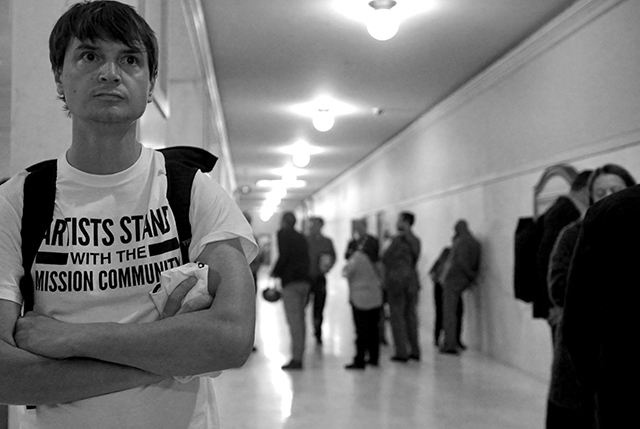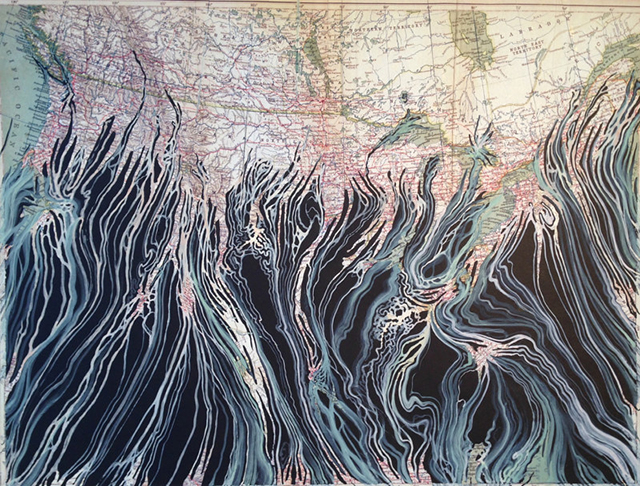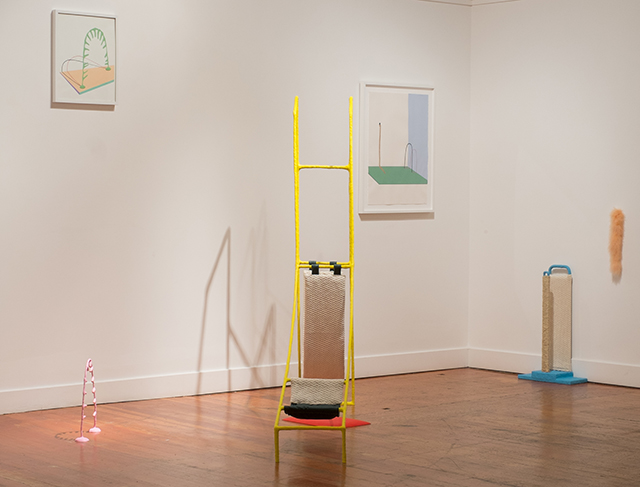Nearly every week we hear of another beloved Bay Area business closing, another cultural space threatened by rising rents and changing tastes. But what happens after an eviction notice, after a lease isn’t renewed, after displacement?
For the tenants of Studio 17, a 21,000 square foot studio space on the fourth floor of the historic Redlick Building in San Francisco, this question is answered. As detailed in our April coverage, approximately 70 artists who rented studios in the Redlick could not secure new leases within the building. At the end of June, the owners provided moving services for over a dozen artists who still remained, transporting their studio contents to new work spaces, storage facilities or, for many, their living rooms.

Those studios, which occupied the top floor of the Mission district building (also home to the Thrift Town and Fabric Outlet stores), are now empty, awaiting a Sept. 3 decision from the San Francisco Planning Commission about zoning within the building.
The building owners, Rick Holman and Toby Levy, seek conditional use permits to legalize office space on the Redlick’s fourth and third floors, with approximately 16,000 square feet set aside on the third, second and ground floors for “trade shop” use — planning department-speak for artist studios and a storefront gallery.
After Studio 17’s lease expired on June 30, a handful of the displaced artists moved to the building’s second floor, where the building owners offered nine studios at a below-market rate of $2 a square foot.
Kate Nichols, a former Studio 17 tenant, compares the second floor to Being John Malkovich’s floor 7 ½, where workers move through their office space hunched under absurdly low ceilings. In reality, the second floor maxes out at a more reasonable 7 feet, 6 inches — still a far cry from the fourth floor’s lofty ceilings and gigantic windows overlooking the Mission.
One of the transplanted second floor tenants, who prefers to remain anonymous to maintain her relationship with the building owners, says the space isn’t suitable for all practices, citing the low ceilings, limited natural light, no ventilation, walls that don’t fully block sound and no mess sink. But she is thankful to have a studio at all. “Space for artists is diminishing in the Mission, and quite honestly we couldn’t find any other space in our price range anywhere else,” she says.
Steven Vettel, lawyer for the building owners, spoke in favor of the proposed rezoning at the Aug. 6 planning hearing: “Those artist rent subsidies, the remaining 16,000 square feet of non-artist trade shop use, retention of Thrift Town and Fabric Outlet at affordable rents and the substantial cost to seismically upgrade the building only works if some of the building is legalized as office space.”
In other words, market-rate office space will subsidize below-market artist space. But the Cultural Action Network (CAN), activists seeking to protect artists, cultural organizations and their spaces, have another proposal: reserve the low-ceilinged second floor for offices, give the more spacious third floor to artists and let the fourth floor be even more lucrative office space.

CAN’s alternative proposal is supported by nearly 3,000 online signatures. At the Aug. 6 hearing, Gabriel Medina, policy manager at the Mission Economic Development Agency and Erick Arguello, member of Calle 24, the 24th Street cultural heritage and merchant’s association, spoke in support of CAN’s proposal, along with a group of displaced Studio 17 artists wearing shirts printed with the message: “Artists stand with the Mission community.”
While current tenants and owners await the Planning Commission’s next hearing, former Studio 17 members adapt to their new surroundings. After five years in the Redlick building, artist Mark Garrett managed to find a smaller space in San Francisco’s Dogpatch neighborhood. “The effect has been profound,” Garrett says of the move. “This has been so disruptive to my work and my concentration.” Garrett’s studio practice is his livelihood, and Garrett’s work space is integral to his productivity. Unhappy with his new space, but unsure as to whether he’ll be able to find something more suitable, the artist is reluctant to unpack, settle in or start working on anything substantial.

But not all of the ex-Studio 17 tenants are feeling as pessimistic about the future. Bass & Reiner, a gallery that operated within Studio 17 for eight months, will join the Minnesota Street Project, a 35,000 square foot arts facility in the Dogpatch. “Minnesota Street feels like it will be a place to nurture and grow a gallery like ours, which is still really in its infancy,” says Bass & Reiner co-director Chris Grunder. The gallery’s new space will be smaller, but possibly more sustainable. “Less space seems like a negative at first,” Grunder says. “But for us, less rent and less shipping costs to fill the space are going to give us a chance to really establish a sound business model.”
For many of the displaced artists, the loss of their work space was a call to action. Truong Tran, a mixed media artist who worked in Studio 17 for four years, wants to make sure other considerations aren’t forgotten in the arguments about square footage, ceiling height and tech versus art. “In this particular case, the developer has a platform to say look at what I’m doing for the good of the arts community,” Tran said at the Aug. 6 Planning Commission hearing. “What is not being addressed is the displacement of the working class and people of color. This is erasure of culture and communities. This is gentrification.”